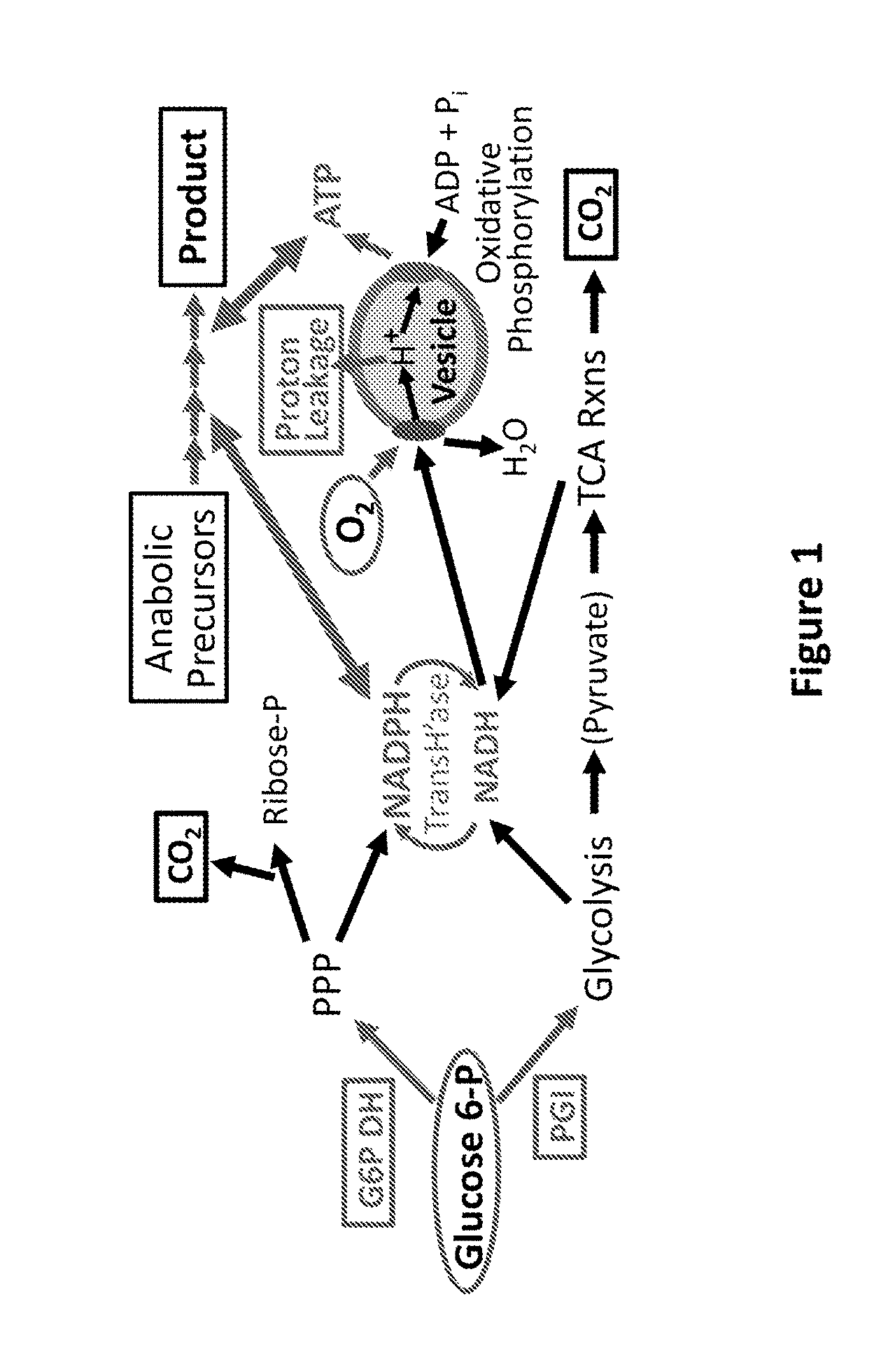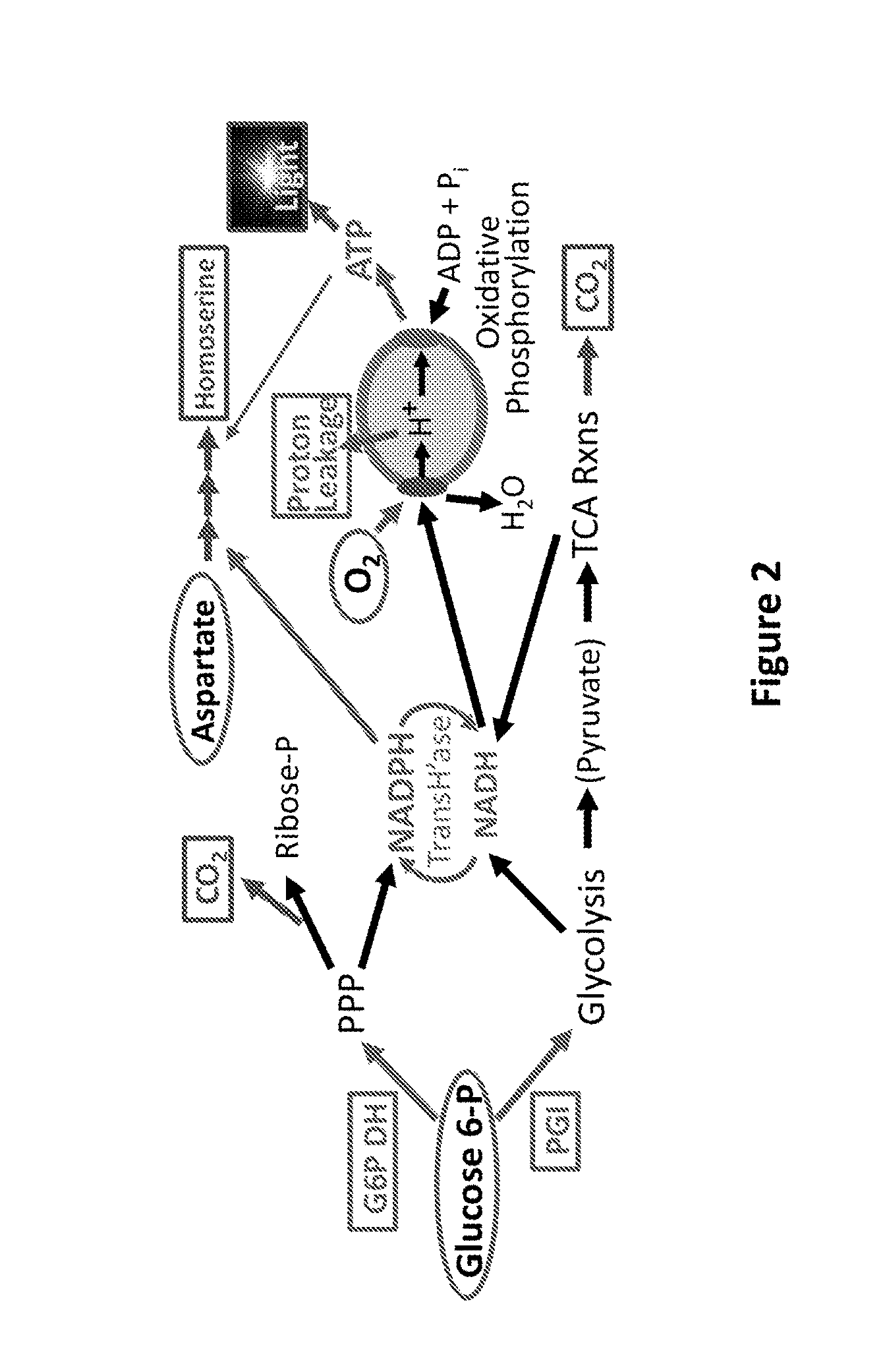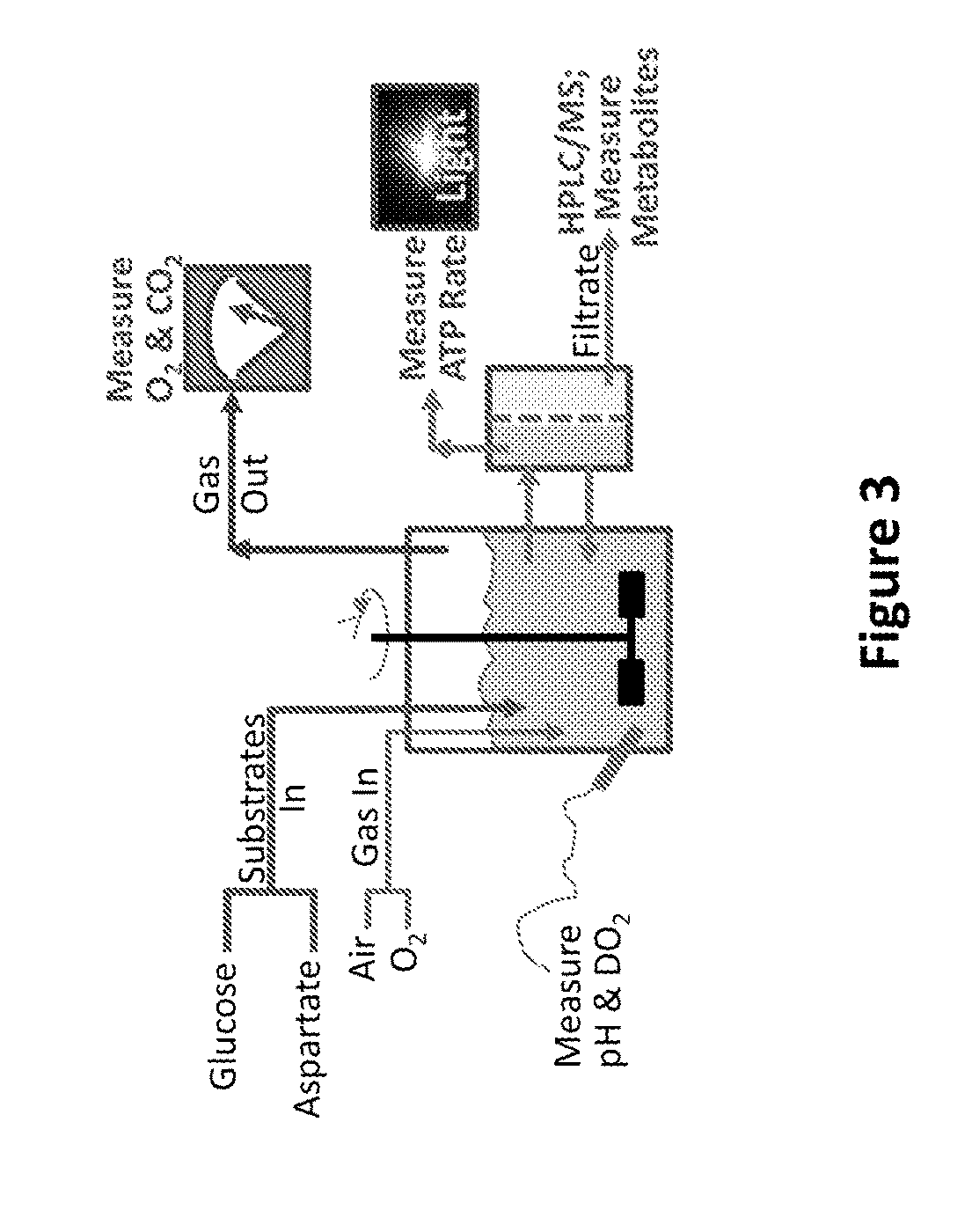Control of metabolic flux in cell-free biosynthetic systems
a biosynthetic system and metabolic flux technology, applied in the field of control of metabolic flux in cell-free biosynthetic systems, can solve the problems of limiting overall yield, and affecting the effect of oxidative stability
- Summary
- Abstract
- Description
- Claims
- Application Information
AI Technical Summary
Benefits of technology
Problems solved by technology
Method used
Image
Examples
Embodiment Construction
[0020]Unless defined otherwise, all technical and scientific terms used herein have the same meaning as is commonly understood by one of ordinary skill in the art to which this invention belongs. All patents, patent applications (published or unpublished), and other publications referred to herein are incorporated by reference in their entireties. If a definition set forth in this section is contrary to or otherwise inconsistent with a definition set forth in the patents, applications, published applications and other publications that are incorporated herein by reference, the definition set forth in this section prevails over the definition that is incorporated herein by reference.
[0021]Citation of publications or documents is not intended as an admission that any of such publications or documents are pertinent prior art, nor does it constitute any admission as to the contents or date of these publications or documents.
[0022]As used herein, “a” or “an” means “at least one” or “one ...
PUM
| Property | Measurement | Unit |
|---|---|---|
| Concentration | aaaaa | aaaaa |
| Enzyme activity | aaaaa | aaaaa |
Abstract
Description
Claims
Application Information
 Login to View More
Login to View More - R&D
- Intellectual Property
- Life Sciences
- Materials
- Tech Scout
- Unparalleled Data Quality
- Higher Quality Content
- 60% Fewer Hallucinations
Browse by: Latest US Patents, China's latest patents, Technical Efficacy Thesaurus, Application Domain, Technology Topic, Popular Technical Reports.
© 2025 PatSnap. All rights reserved.Legal|Privacy policy|Modern Slavery Act Transparency Statement|Sitemap|About US| Contact US: help@patsnap.com



